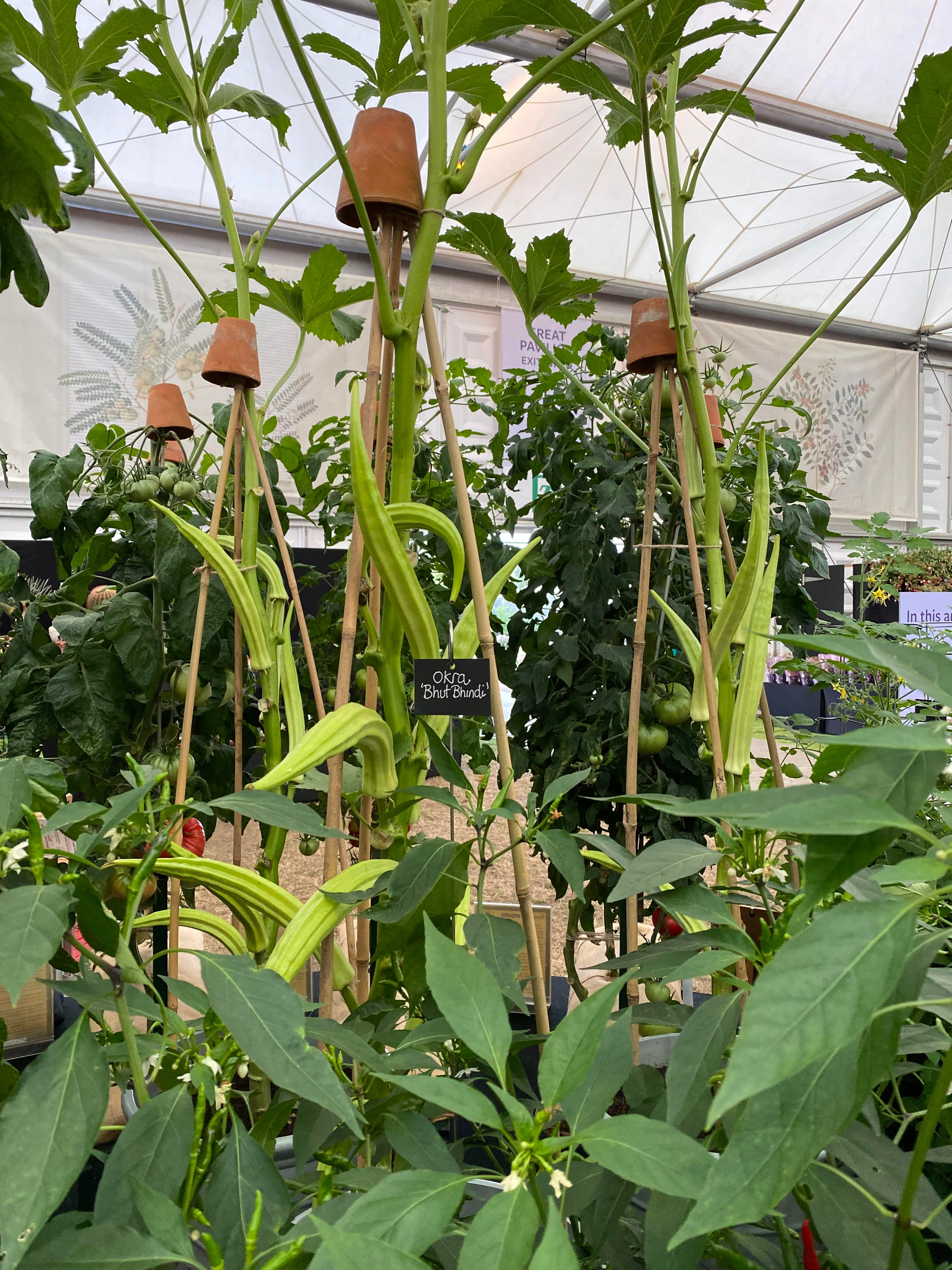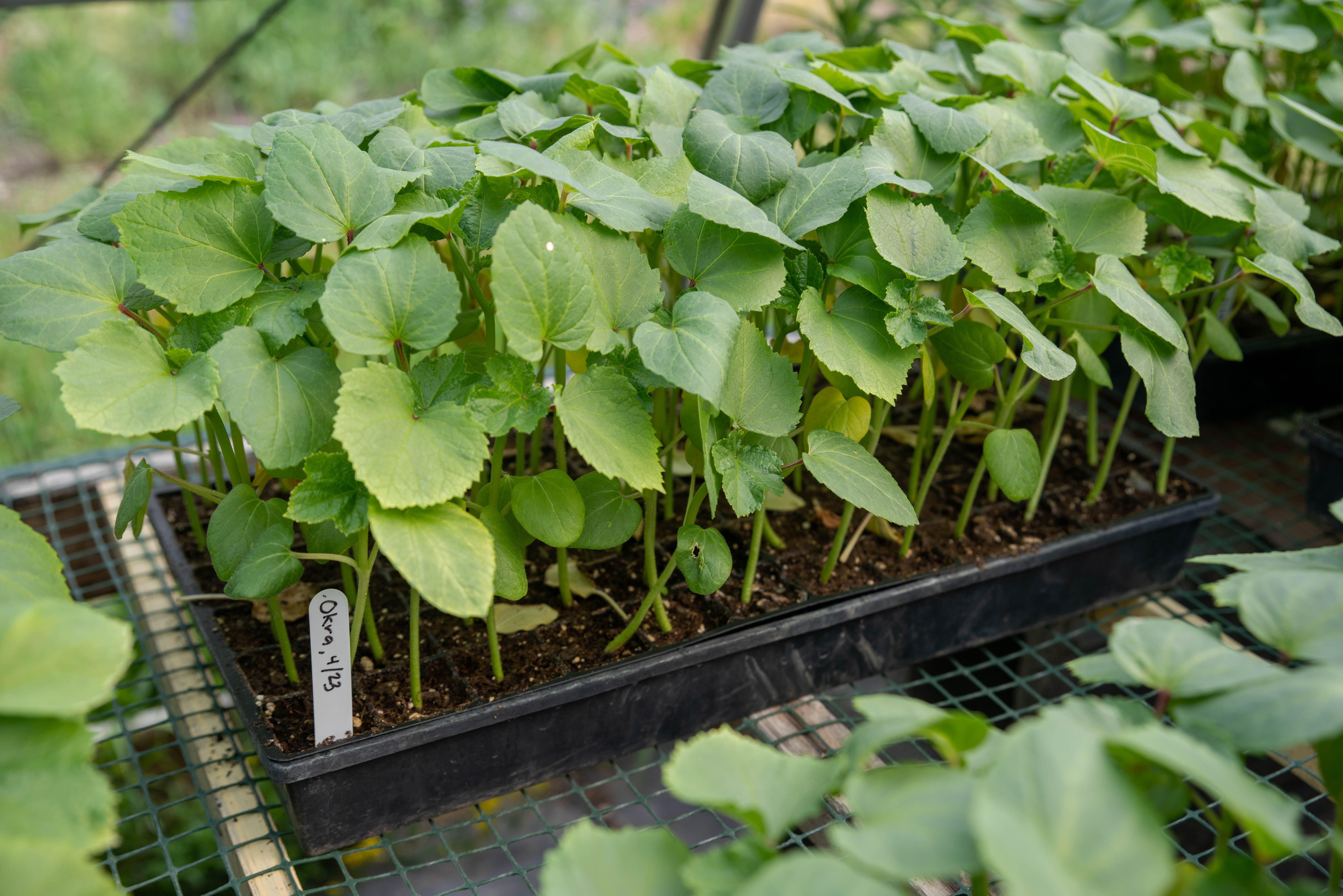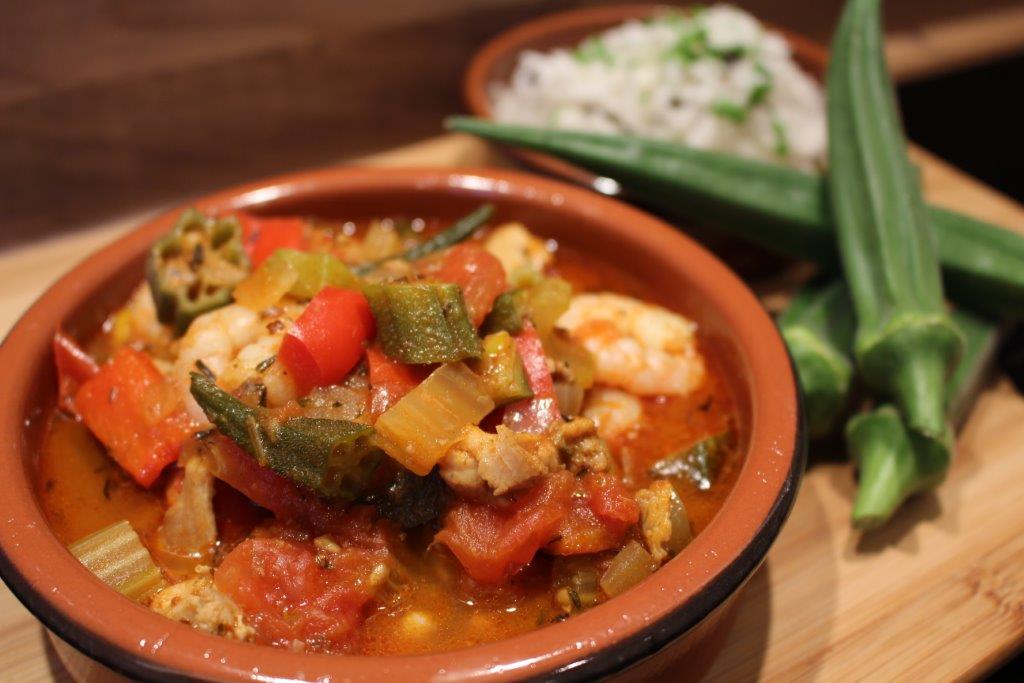
Okra, or ‘lady’s fingers’, so-called because of its delicate finger-like shape, is back in the spotlight after becoming a highlight of RHS Chelsea Flower Show 2021.
A new variety, Okra ‘Bhut Bhindi’, which grows to 1.5 metres tall and produces okra of up to 30cm (1ft) in length, was displayed at the show and is available for the first time in the UK.
“Okra is becoming more and more popular as a vegetable, not only to grow but also to eat,” says Simon Crawford of plant breeding and seed sales company Burpee Europe.
“This stunning vegetable has been seen by some in the past to be difficult to grow in our UK climate. But with the brand new Okra ‘Bhut Bhindi’, all this has changed. Previously, this staple of Asian diets has not been bred for greenhouse production, and so was nearly impossible to grow in the UK.
“However, this new and unique okra, never before offered in the UK, is highly suited for cold greenhouses. ‘Bhut Bhindi’ has a stunning white flower and very unusual pale greenish-white fruit. This vigorous grower is, in our view, the best variety for UK growing.”
Where does it come from?
It is believed that okra originated around Ethiopia and was cultivated by the ancient Egyptians, before its cultivation spread throughout North Africa and the Middle East and to India Okra comes from the mallow family and is a good source of minerals, vitamins and fibre.
It can be cooked, steamed, used in stews and soups among other dishes. It is commonly known for its use in Creole style cooking and specifically in gumbo stew. It is also widely used in Middle Eastern and Indian cuisine. Historically, okra seeds have been ground to make a caffeine substitute for coffee, most notably when coffee transportation was hindered during the American Civil War.
What is different about Okra ‘Bhut Bhindi’?

Okra ‘Bhut Bhindi’ was selected by the Burpee breeding team in Bangalore because of its vigour, colour and cold tolerance. After testing this okra in the UK it was found to be extremely vigorous and highly suitable in colder conditions, the most fitting for this climate.
How do you grow it?

Other okras have needed a hot greenhouse, but this particular one thrives in a cool greenhouse. “For our display at Chelsea, it was sown in a cell tray, potted up eventually into a 10cm pot then when ready, moved into the large 40cm pot which it absolutely loved. It should, however, always be kept in a cool polytunnel or greenhouse and not outside, even in the summer,” says Crawford.
Growing basics:
Sow March to April in seed trays or small potsKeep covered by clear polythene and around 16COnce you see the seedlings emerge, take away cover and place in a light warm areaWhen seedlings are large enough, move to 10cm potsMake sure compost is kept moist but do not overwaterSuitable for unheated greenhouse growing in UKRequires full sun and some warmth in the growing seasonGrows to 1.5 metres tallHow is ‘Bhut Bhindi’ best served?

This variety grows up to 30cm long, however the best time to harvest is when you can snap the okra rather than bend it. This is usually when it is around 10cm long (the pods become tough and stringy if allowed to grow really long).
It goes well with Creole dishes, such as Creole Okra with Chicken & Prawns, a recipe devised by chef Valerie Hamelin, a delicious stew-like dish combining chicken marinaded in a tasty Creole spice mix combined with onions, garlic, celery, jalapenos and, of course, okra. The recipe can be found on the Burpee Europe website burpeeeurope.com.
Seeds for Okra ‘Bhut Bhindi’ are available from Pennard Plants (pennardplants.com).







